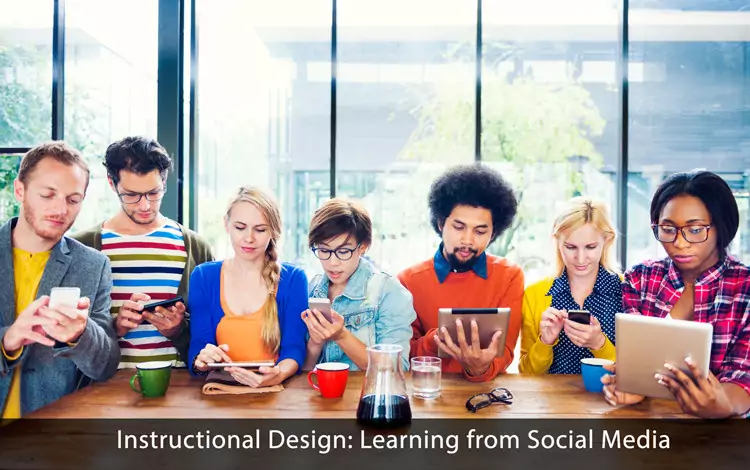Instructional Design: Learning from Social Media

Learning is no longer assumed to be a discrete experience that can only take place in a classroom or at a training center. Most students and workers now accept the fact that learning is for life and further accept that learning is no longer location bound. At the same time, social media platforms continue to expand opportunities to acquire and share information. Indeed, many learners already use social media platforms to facilitate informal learning. But what are their advantages and limitations? Can they be used in formal learning situations?

Course and Learning Management Systems
Course and learning management systems (CMSs or LMSs) are digital platforms, like eLeaP or Canvas, which are generally used by large institutions (e.g., universities) to deliver courses online or to augment face-to-face learning experiences. While these management systems have radically changed course delivery over the past two decades, they do have limitations. For example, most learners only post on these platforms when required to do so by a teacher, professor or instructor. In short, these systems are external to learners’ everyday communications and at times, they lack the spontaneity, flexibility and ubiquitous nature of the social media platforms that many learners rely on to communicate and share information outside of school and work.
Personal Learning Environments
Some trainers and educators believe personal learning environments (PLEs), which leverage an entire range of social media tools to support education and training, hold great potential. Here, social media refers to networked digital tools and technologies that promote communication, collaboration and creativity. Social media tools include everything from WordPress blogs to Google docs to video streaming sites, like Vimeo and Youtube, to networking platforms, like Facebook and LinkedIn. In theory, PLEs use these tools, networks and services to enable learners to direct their own learning and pursue their education and training goals with increased agency. With few exceptions, however, these platforms remain the domain of informal learning rather than formal learning. The question that remains is should educators and trainers focus on integrating these readily available social media platforms, or is it more advantageous to design course and learning management systems that do a better job replicating what makes these platforms appealing to learners?
Advantages and Disadvantages
On the one hand, adopting existing social media platforms for use in educational and training contexts has its advantages. Social media platforms are already familiar to most learners and therefore require little technical support. Moreover, they are usually highly accessible and cost effective. Most notably, they are already integrated into learners’ lives. On the other hand, when used for educational purposes, these platforms hold the potential to compromise learners’ privacy and put the learning environment into a commercial realm. The downside, then, is twofold. First, education and training become increasingly public. Ultimately, this limits learners’ opportunities to explore and take risks in a protected environment. Second, education and training become increasingly subject to the distractions that are part of nearly all social media platforms. In other words, if PLEs become the norm, education and training may no longer be commercial free.
Personalizing CMSs and LMSs
What makes PLEs appealing is the fact that they rely on platforms that most learners’ already use in their everyday lives. Moving forward, rather than replace existing course and learning management systems with personal learning environments, the challenge is to design CMSs and LMSs that effectively respond to the needs of learners in ways that replicate their personal learning environments. This can be accomplished by creating platforms that fit seamlessly into learners’ lives (e.g., developing mLearning options that deliver course content in small units that can be accessed by learners anywhere and anytime). This can also be accomplished by creating more options for learners to connect and collaborate using a wide range of tools, which include visual tools that mimic popular visual media platforms like Youtube and Instagram. In short, while commercial social media platforms will likely never present a real threat to CMSs and LMSs, they hold great potential to inform future instructional design.